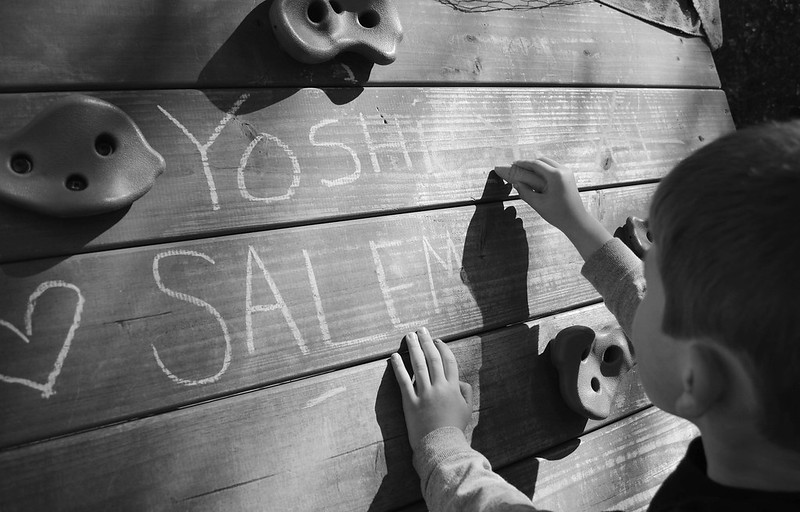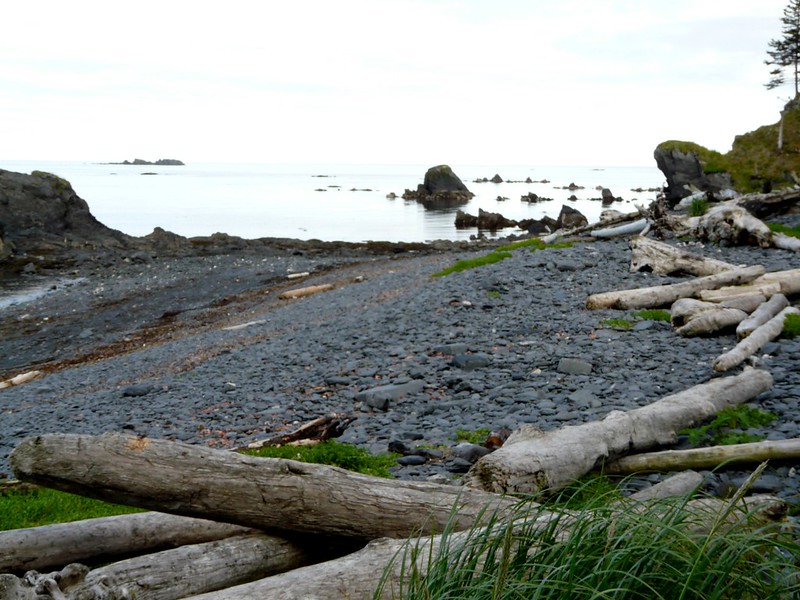09
2013Leading Lines: Storytelling with Images {Free Beginner Photography Class}
Last week we talked about how the Rule of Thirds creates a stronger composition through putting the main subject in one of the area’s a viewers eyes naturally land. This week we’ll introduce another key composition concept.
Leading Lines
Leading lines are any lines, straight or curved, the help move a viewer’s eye throughout the frame. Successful leading lines help to create a visual narrative causing the viewer to move from one important aspect of the image to another.
When I think of leading lines, the first example that comes to my mind train tracks photographed so that the viewer’s eye is led right off the horizon. It’s a classic effect that always gives the viewer a sense of journeying forward.
However, most uses of leading lines are more subtle. A horizon line or the curve of the oceans shoreline can be a leading line. A watermelon rind can be a leading line that points us to the smile of a still dripping face. A subject’s extended arm or leg may bring the viewer to examine more carefully. An insinuated line like the probable flight of a softball into the waiting outfielders mint could even qualify as a leading line.
How to Use a Leading Line
Let’s be honest, sometimes great leading lines in your image are a sheer accident.

The horizontal lines of the writing surface draw the viewer straight to the subject writing. Jessica probably didn’t notice this effect when she snapped this photograph (kudos if she did!), but those lines contribute to the narrative of her son’s written words.
However, our assignment will be to notice and intentionally use leading lines, so lets jump into a few case studies of both obvious and more subtle leading lines.
Leading Lines Case Study
All of the following images were provided by SarahBeth and TeddyBouch. As I’ve mentioned before, these two class members have been gracious enough to fill in the photographic gaps created by my primary role of wife and mother. I’m so grateful for both of them!
When we’re critiquing photographs solely on the basis of leading lines, we’ll use the following questions:
- What is creating the leading line (or lines)?
- Where is the viewer’s eye led?
- What is the story this image is telling you as a viewer?
- Do the leading lines create a narrative that helps the viewer understand the story the image is trying to tell?
I’m going to answer each of these in the analysis of the following images.
- What is creating the leading line (or lines)? There are two sets of lines in this photo: the raised wooden path and the tall straight trees.
- Where is the viewer’s eye led? My eye is immediately led up the path, but once i reach the visual “end” of the path my eye catches the upward then downward movement of the tree trunks. At the end of this visual trip, my eye takes another trip up the path…
- What is the story this image is telling you as a viewer? I feel like I’m being quietly beckoned into an enchanted forest.
- Do the leading lines create a narrative that helps the viewer understand the story the image is trying to tell? The leading line of the path is what beckons me into the enchanted forest and is in fact the whole narrative as I understand it. The vertical lines of the trees effectively set the scene.
- What is creating the leading line (or lines)? The shoreline in the foreground, the horizon in the background, and the rim of the island.
- Where is the viewer’s eye led? Up the shoreline curving to the rocks, on to the horizon then back to the island, and finally to the lighthouse.
- What is the story this image is telling you as a viewer? The story I hear is of the importance of this lonely lighthouse.
- Do the leading lines create a narrative that helps the viewer understand the story the image is trying to tell? The leading lines here, although much more subtle than the prior image help the eye focus on the lighthouse.
- What is creating the leading line (or lines)? The shoreline, the horizon, and the clouds.
- Where is the viewer’s eye led? The shoreline leads us to the water. The clouds and the horizon lead us to the mountains and the horizontal clouds.
- What is the story this image is telling you as a viewer? I just see the majesty of creation.
- Do the leading lines create a narrative that helps the viewer understand the story the image is trying to tell? The leading line in front shoreline sort of draws me right past the mountain in the foreground. I’m not sure that it’s a bad thing, but it doesn’t immediately point to the same area as the other leading lines. The clouds here are by far the most surprising lines and I do believe they point us right to the mountains off shore.
- What is creating the leading line (or lines)? The shoreline, of course, but the driftwood/fallen logs are a leading line as well.
- Where is the viewer’s eye led? Up the driftwood, along the shoreline, and back again.
- What is the story this image is telling you as a viewer? A sense of bewildered wonder at so many huge logs: What happened?
- Do the leading lines create a narrative that helps the viewer understand the story the image is trying to tell? The leading lines of the driftwood ARE the story. What happened?
Leading Lines Assignment
Now that we’ve looked at a few images with successful leading lines, lets go out and make a few of our own (1 or more). Pay attention to your surroundings when taking these images. Not only can a set of leading lines upgrade at image from snap shot to something special, but paying attention helps you make sure you’re telling the story you want to tell.
Once you’ve taken a few leading lines images, hop on over to our Free Beginner Photography Class Group and share with us and leave your answers to the following questions on a few leading lines images that catch your eyes.
- What is creating the leading line (or lines)?
- Where is the viewer’s eye led?
- What is the story this image is telling you as a viewer?
- Do the leading lines create a narrative that helps the viewer understand the story the image is trying to tell?
How are you feeling about Storytelling with Images? Did the last two “rule” based lessons help you focus on telling the story well-composed? The next couple weeks we’ll be discussing different ways to compose your images to tell your story better. And I might sneak in an extra post after that before jumping into a the culmination of this series.






